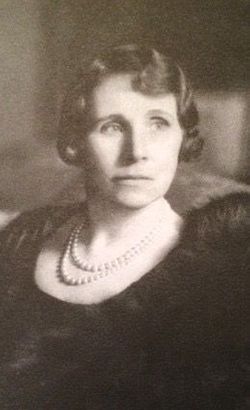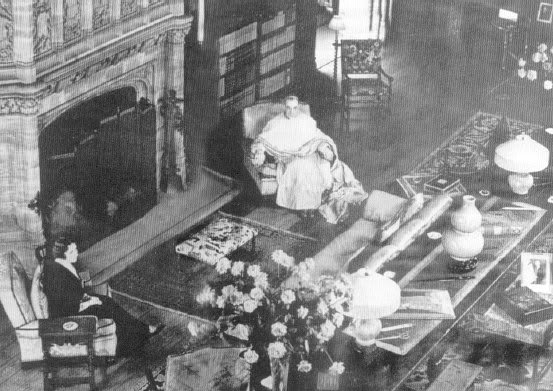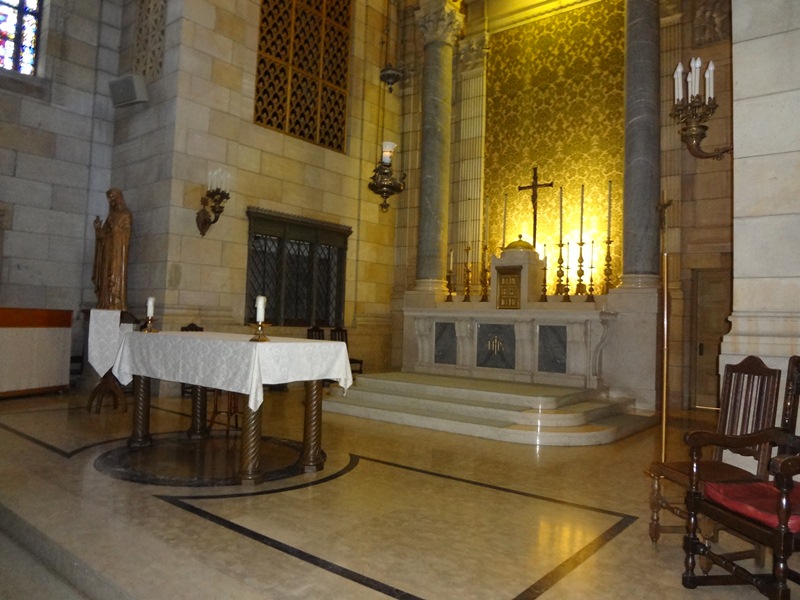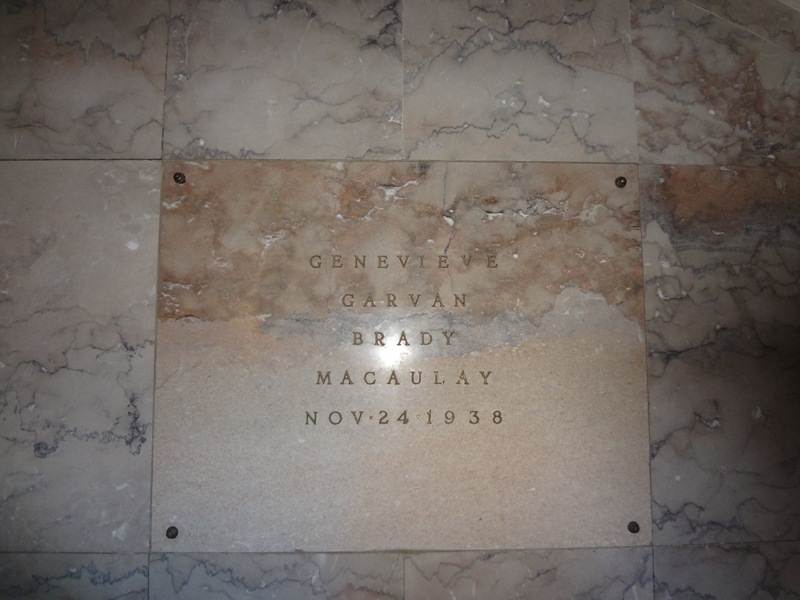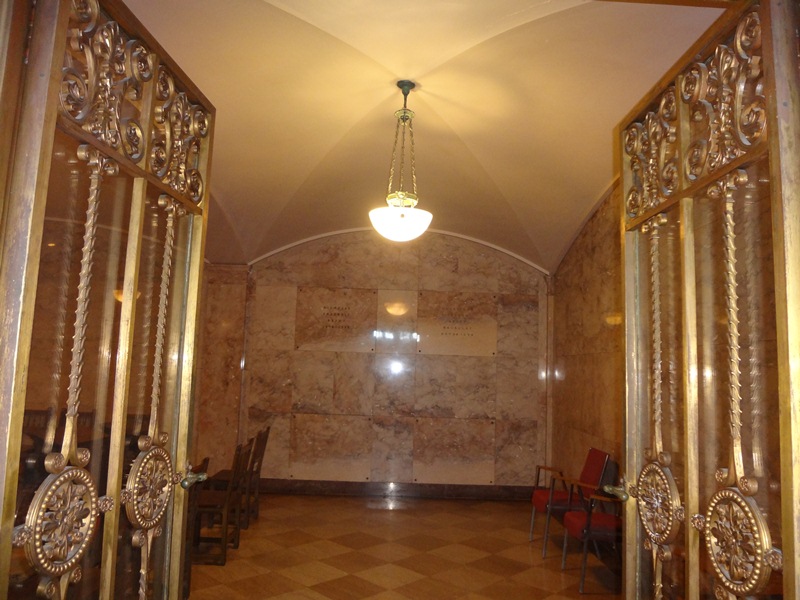A devout Roman Catholic, she was a Dame of the Holy Sepulchre, holder of the Cross Pro Ecclesia et Pontifice, founder of the Carroll Club, 1933 recipient of the University of Notre Dame's Laetare Medal as the most notable lay Catholic in America, Board Chairman of the Girls Scouts of America and a Vice-President of the Welfare Council of New York. In 1926 her husband was enobled by Pius XI and created a Papal Duke. Genevieve was created a Papal Duchess in her own right.
The Papal Duke and Duchess lived at 910 Fifth Avenue in New York City but also built a large Tudor Elizabethan mansion, Inisfada, on an estate on the North Shore of Long Island, New York that was completed by 1920, and known as "Inisfada", Gaelic for "Long Island". It was here that she entertained Cardinal Secretary of State Eugenio Pacelli, later Pope Pius XII, on his American tour in 1936. The Duchess would gift the Estate to the Society of Jesus. The Inisfada mansion is now used as The St. Ignatius Jesuit Retreat House.
Following the death of her husband, Genevieve Brady remarried to the Irish Free State Minister to the Vatican, William J. Babington Macaulay. The Papal Duchess died in Rome in 1938, and her body was returned to the United States and buried beside Nicholas. In the church of St. Patrick in Rome a large plaque honors her life and contributions to the Catholic Church both in Rome and America. The Stations of The Cross in the church were presented to it by her second husband and are considered among the finest in design and craftsmanship in Rome.
In August 2011, more than 90 years after benefactors Nicholas and Genevieve Brady gifted the grounds and buildings for the novitiate of St. Isaac Jogues, the Jesuit Center at Wernersville officially closed. Although the novitiate itself was moved from Wernersville in 1993, the retreat center remained as a peaceful destination for many seeking the spiritual exercises and a closer encounter with God. On May 12, 2023, the Brady's were removed from the building to a newly designed wall adjacent to the burial locations of Jesuits in the Jesuit Cemetery at Wernersville.
The atmosphere during the move was peaceful, quiet and reverent. The endeavour required much coordination among the maintenance workers, undertaker, mortuary specialist and contracted grounds crew for removing the coffins from the crypt, Nicholas Brady's coffin being of solid bronze with an estimated weight of more than 1,500 lbs. Mechanical lifts and the manpower of ten were required to remove and transfer the remains from the building to the cemetery.
The new tomb memorials were designed to resemble Jesuit tombstones by Fr. Thomas Kuller SJ., president of the Jesuit Cemetery of St. Isaac Jogues.
A devout Roman Catholic, she was a Dame of the Holy Sepulchre, holder of the Cross Pro Ecclesia et Pontifice, founder of the Carroll Club, 1933 recipient of the University of Notre Dame's Laetare Medal as the most notable lay Catholic in America, Board Chairman of the Girls Scouts of America and a Vice-President of the Welfare Council of New York. In 1926 her husband was enobled by Pius XI and created a Papal Duke. Genevieve was created a Papal Duchess in her own right.
The Papal Duke and Duchess lived at 910 Fifth Avenue in New York City but also built a large Tudor Elizabethan mansion, Inisfada, on an estate on the North Shore of Long Island, New York that was completed by 1920, and known as "Inisfada", Gaelic for "Long Island". It was here that she entertained Cardinal Secretary of State Eugenio Pacelli, later Pope Pius XII, on his American tour in 1936. The Duchess would gift the Estate to the Society of Jesus. The Inisfada mansion is now used as The St. Ignatius Jesuit Retreat House.
Following the death of her husband, Genevieve Brady remarried to the Irish Free State Minister to the Vatican, William J. Babington Macaulay. The Papal Duchess died in Rome in 1938, and her body was returned to the United States and buried beside Nicholas. In the church of St. Patrick in Rome a large plaque honors her life and contributions to the Catholic Church both in Rome and America. The Stations of The Cross in the church were presented to it by her second husband and are considered among the finest in design and craftsmanship in Rome.
In August 2011, more than 90 years after benefactors Nicholas and Genevieve Brady gifted the grounds and buildings for the novitiate of St. Isaac Jogues, the Jesuit Center at Wernersville officially closed. Although the novitiate itself was moved from Wernersville in 1993, the retreat center remained as a peaceful destination for many seeking the spiritual exercises and a closer encounter with God. On May 12, 2023, the Brady's were removed from the building to a newly designed wall adjacent to the burial locations of Jesuits in the Jesuit Cemetery at Wernersville.
The atmosphere during the move was peaceful, quiet and reverent. The endeavour required much coordination among the maintenance workers, undertaker, mortuary specialist and contracted grounds crew for removing the coffins from the crypt, Nicholas Brady's coffin being of solid bronze with an estimated weight of more than 1,500 lbs. Mechanical lifts and the manpower of ten were required to remove and transfer the remains from the building to the cemetery.
The new tomb memorials were designed to resemble Jesuit tombstones by Fr. Thomas Kuller SJ., president of the Jesuit Cemetery of St. Isaac Jogues.
Family Members
See more Brady Macaulay or Garvan memorials in:
- Jesuit Cemetery Brady Macaulay or Garvan
- Wernersville Brady Macaulay or Garvan
- Berks County Brady Macaulay or Garvan
- Pennsylvania Brady Macaulay or Garvan
- USA Brady Macaulay or Garvan
- Find a Grave Brady Macaulay or Garvan
